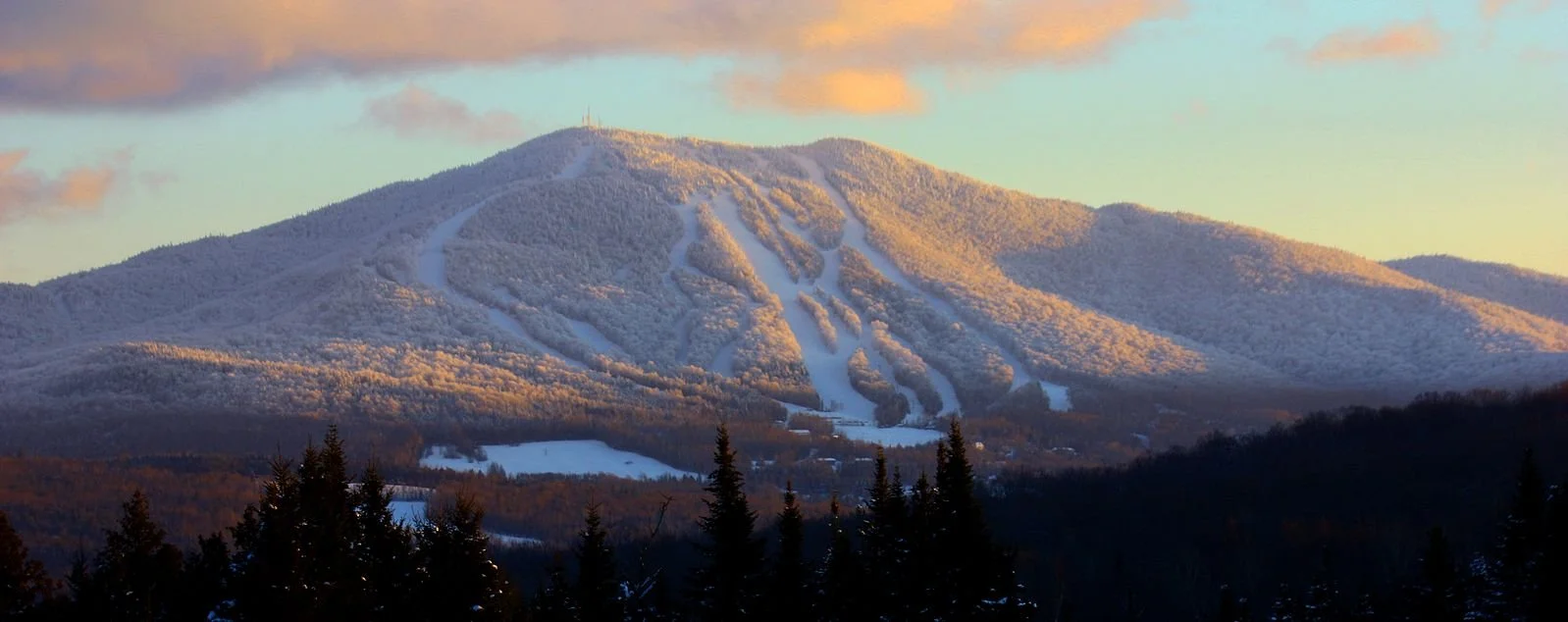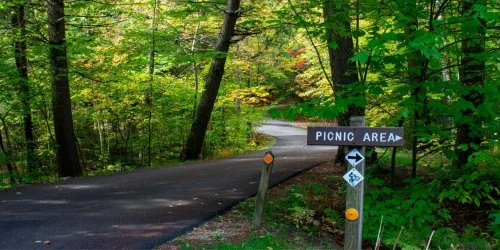Vermont’s ski areas pivot with warmer winters
Burke Mountain, photo courtesy of Wikimedia Commons
With winter weather becoming harder to predict, Vermont’s skiing and outdoor recreation industry is looking at new ways to keep the season’s business going.
Vermont has been getting warmer and warmer. Compared to 1960, spring is arriving two weeks earlier and winter is starting one week later, according to the state Department of Health. Out of 135 winters from 1816 to 1950, Lake Champlain froze over all but seven times. Since 1990, it’s only frozen 10 times. Vermont climate scientists expect more rain and less snow in winters to come.
For many ski resorts and outdoor recreation centers navigating these conditions, one solution is making up for the lack of fresh snow.
“The good news on our end is that we’re able to ameliorate some of the issues to a certain degree with snowmaking and over-summer snow storage,” said Sheldon Miller, communications director for the Craftsbury Outdoor Center, which offers 105 kilometers of trails to ski on. The center can haul up man-made snow.
But rolling out fake snow isn’t always a viable option. Miller said it must be 28 degrees or lower to make snow. When the temperature is too high, it becomes difficult to even transport the man-made snow to the trails. Since the Craftsbury center doesn’t have snow guns along its trails, workers have to load the snow onto trucks and haul it out. This gets tricky when the ground isn’t frozen.
“Stick season — October, November — can oftentimes still be super wet and super warm,” Miller said. “And so, if you drive a dump truck full of several tons of snow, you’ll make giant ruts in the trail.”
With warmer temperatures each winter, this is becoming a larger problem.
So some in the winter recreation field are looking toward alternatives to snow sports altogether.
“We can’t necessarily always count on the snow being here anymore,” said Bob Schwartz, marketing director at the Trapp Family Lodge in Stowe. “So, what we did is we prepared activities for folks to be able to experience with or without snow.”
The lodge — originally the home of the Austrian von Trapp family made famous by the movie “The Sound of Music” — boasts ski trails, sleigh rides and snowshoeing when the snow is on the ground.
But the resort also offers tours on the von Trapp family history, brewing and maple sugaring. Visitors can even take a tour to meet a herd of Scottish Highlander cows.
To make up for any lost winter tourism, some resorts and outdoors centers are investing in summer programs. Mountain biking at Killington Resort, for example, is on the rise. In 2014, the resort saw 2,000 cyclists, according to a Rutland Herald article from 2018. That latter year, the figure was more than 30,000, and resort management said they wanted to see 70,000 cyclists per year.
The resort declined to give out cyclist numbers for more recent years, but the old projection doesn’t seem far off: Town select board member and interim zoning administrator Jim Haff said the resort saw around 60,000 cyclists last year.
Despite the late start to this winter, the outdoor recreation industry in Killington remains optimistic.
Kristel Killary, brand marketing and communications manager for Killington Resort, said the resort was able to make enough snow over the Thanksgiving weekend to host a skiing World Cup event this past fall.
But for all their optimism, many in the industry feel they are doing all they can to keep up. “You’ve got to go with the flow,” said Eric Friedman, executive director of the Mad River Valley Chamber of Commerce.
He added, “We’re seeing climate change issues and new variability for sure, but we’re used to dealing with variability.”
In Craftsbury, Miller said the outdoor center is doing what it can to fight climate change. The center is adding another solar array that will be completed in the spring and will generate energy for the entire campus. It also offers electric vehicle charging on site.
But when it comes down to it, Miller thinks small-scale changes can only do so much.
“We can do what we can, but it really needs to be a lot broader, systemic change across our society and culture,” he said, adding, “It’s a bigger problem than just changing a light bulb.”







